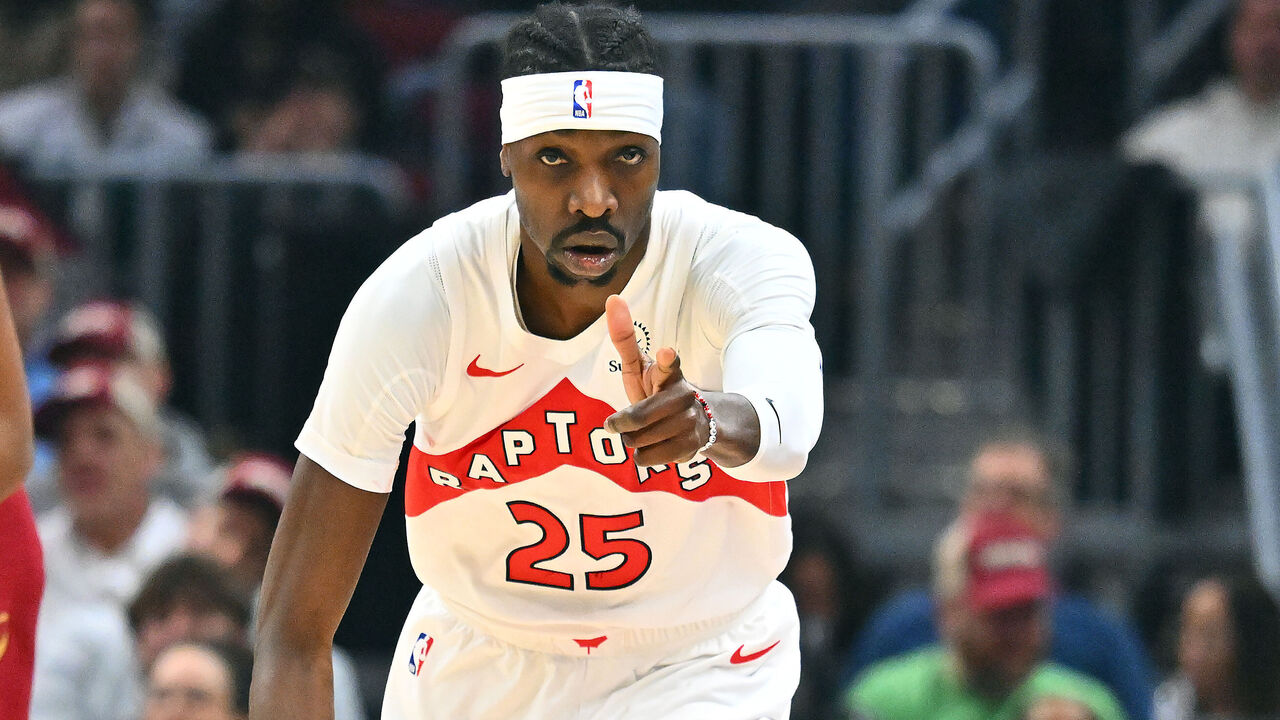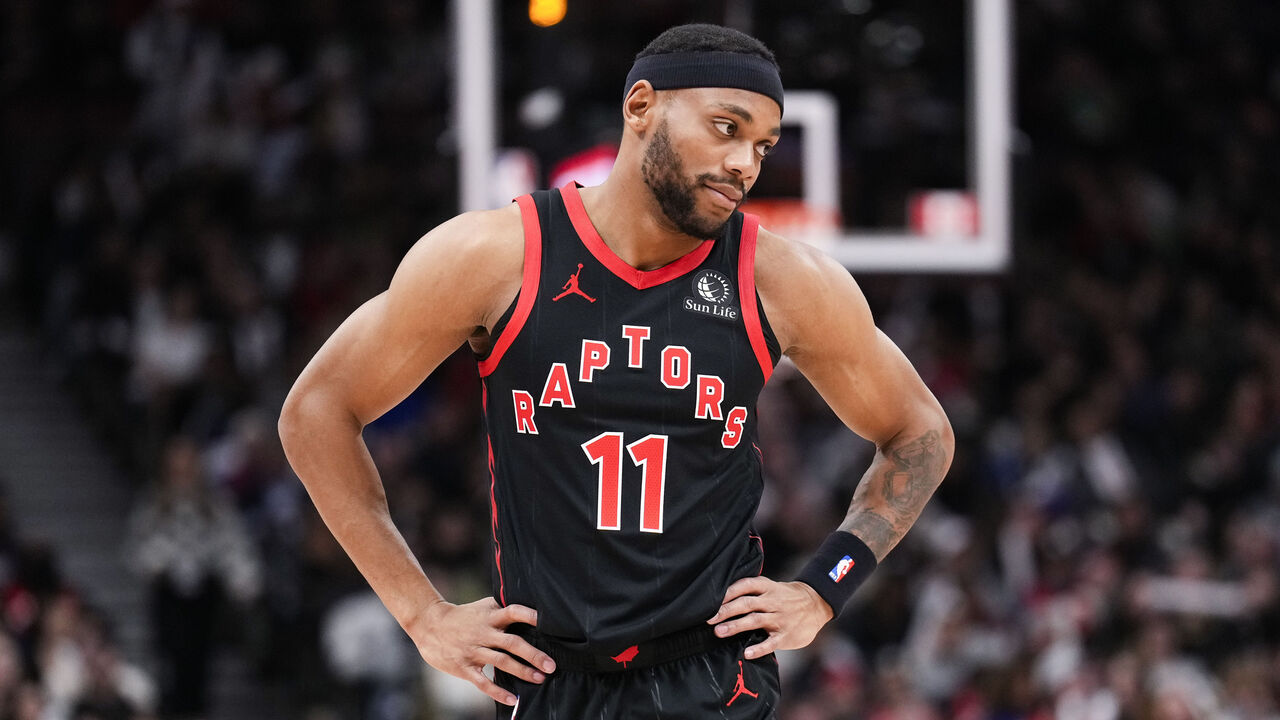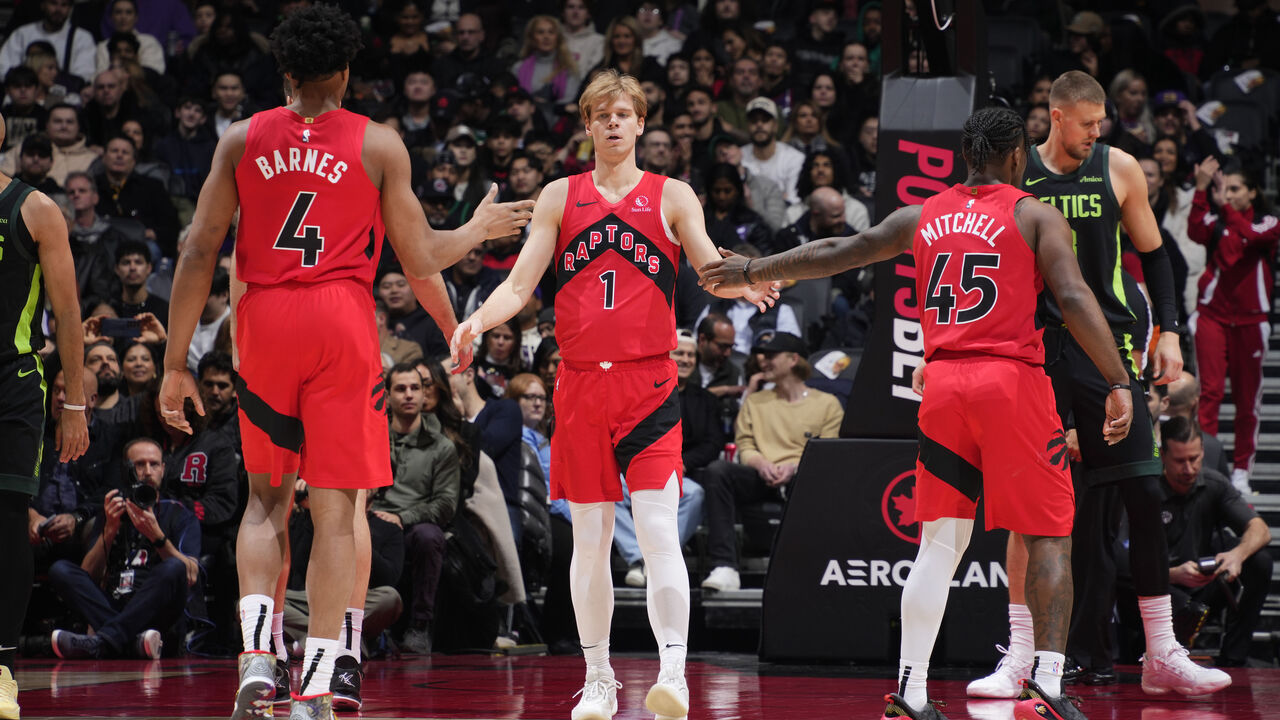The many ways the Raptors can get involved in trade season
Last time we checked in on the Toronto Raptors, the bottom had fallen out. A young team built to lose and overcome with injuries had finally let go of the rope after a surprisingly competitive start. So much for that. The Raptors have won four of their last five games, all of which have come against postseason-caliber competition.
Franchise star Scottie Barnes has been the best player on the court in just about all of those contests, extending a stretch of excellent two-way basketball. Barnes' play, the nurturing of winning habits, and head coach Darko Rajakovic's ability to keep his team engaged after a dismal stretch are all positive developments, even for a team whose gaze remains fixed on the draft lottery.
As I wrote a couple of years ago, as long as your rebuilding team puts itself in decent lottery position, there's no point obsessing over how every single result might skew those odds. And that was before the ninth-worst team won the 2024 lottery.
Having said that, the objective for this season hasn't changed. The Raptors want to develop Barnes and their growing crop of youngsters while losing enough games to have a real shot at the potential franchise-changers who'll headline the 2025 draft (such as Duke phenom Cooper Flagg). The next two weeks leading up to the trade deadline offer a perfect opportunity to kill both birds with one stone: Toronto can turn the veterans currently helping the team win games into future draft capital while clearing a path to more playing time for the younger half of its roster.
Luckily for the Raptors, the recent play of those veterans is helping the cause.

As an energetic, bouncy reserve, Chris Boucher and his expiring $10.8-million salary should appeal to contenders looking to shore up their frontcourt depth. When Boucher caught fire earlier this month, the Canadian big man appeared to represent Toronto's best chance to extract some value from the deadline. Fellow reserves Bruce Brown and Kelly Olynyk have since given the Raptors - and prospective trade partners - more options.
Olynyk looked unplayable upon his return from a back injury that sidelined him for the first 23 games of the season. The 33-year-old was too passive on offense and too slow on defense, but he's bounced back as he's found his legs. Olynyk's averaging 18.2 minutes, 11.3 points, 3.5 rebounds, 3.5 assists, and a block over the last four games. In Tuesday's 16-point win over Orlando, Olynyk was an outrageous plus-39 in 22 minutes.
He's moving his feet better defensively, he's confidently stepping into the open shots he'd been passing up, and he still serves as a competent playmaking hub. Olynyk has canned nearly half of his 3-point attempts this season (17-of-35) and, perhaps most encouragingly for a 12-year vet coming off a back injury, suited up for 21 straight games, although he's now been sidelined by calf tightness. A $13.4-million cap hit for next season is also far from egregious.
The Warriors reportedly almost traded for Olynyk before the Raptors got him last February, and Golden State could still use some frontcourt depth. How about a deal that sees Olynyk or Boucher head to The Bay in exchange for (former Raptor) Dennis Schroder's expiring contract? Toronto could then buy the veteran point guard out. Turning Olynyk into Schroder would clear more than $13 million from the Raptors' 2025-26 cap sheet. If you're wondering what kind of second-round equity the Warriors own, they have a protected 2025 pick from Miami and their own 2030 second-rounder to dangle.

As for Brown, the versatile guard went eight-and-a-half months between games due to a knee injury that required offseason surgery, and his rusty play to begin the new year showed it. But like Olynyk, a healthier Brown now looks rejuvenated. The 28-year-old is averaging nearly 20 minutes, 11.8 points (on 60.8% true shooting), 5.2 rebounds, and 2.3 assists over his last six games.
Brown's a good connector who can play on or off the ball, moves well without it, can defend one through three, and has shot 39% from the corners over the last four years. Ordinarily, a veteran role player like Brown - on an expiring contract, no less - would be a valuable trade chip for his incumbent team and an appealing target for contenders. But these aren't ordinary times. The introduction of a new CBA and the punitive new aprons that come with it make trading for a player like Brown (and his $23-million salary) more difficult for the big-money clubs that'd usually be interested.
Second-apron teams can't aggregate players in trades, while first-apron clubs can't take back more salary than they send out, meaning the latter would have to move more than $23 million in salary to acquire Brown. It's not impossible, and Brown's recent play certainly helps matters, but there's a reason he's seen as a potential post-deadline buyout candidate as much as he is a trade possibility.
In any event, if the Raptors can turn some combination of Brown, Olynyk, and Boucher into multiple second-round picks, it'd be a small victory in a season defined by strategic losses, especially given what Brown and Olynyk looked like as recently as a couple weeks ago.
Starting center Jakob Poeltl carries more value than any other Raptors veteran, but he remains one of the league's most underrated players. At 29 years old, Poeltl can still serve a purpose on Toronto's next competitive team. That doesn't make him untouchable, but Poeltl's too good to be traded for the sake of it, or to expedite a freefall in the standings (the team can just find creative ways to hold him out of the lineup to achieve that). Barring a desperate team overpaying for him, don't bet on Poeltl moving before Feb. 6.
Davion Mitchell's one of the league's premier point-of-attack defenders and the 26-year-old has flashed some playmaking potential, but he's too poor a shooter and too turnover-prone to be more than a good team's fourth guard. He could be a low-key trade candidate if the Raptors aren't interested in re-signing him.

The way Mitchell was acquired last summer offers a glimpse into how else the Raptors can make use of the deadline. Toronto was able to take a flier on Mitchell while acquiring rookie point guard Jamal Shead and Portland's 2025 second-rounder (in addition to Sasha Vezenkov, who returned to Europe after a buyout) simply by helping Sacramento get out of a financial jam (Jalen McDaniels was sent to the Kings in exchange).
As a rebuilding team with the flexibility that comes from being $10 million below the tax threshold, the Raptors can offer similar assistance to rivals looking to duck the luxury tax or one of the aprons this year. That doesn't mean Toronto will happily take on a terrible contract, but if the Raptors can add to their stockpile of picks by taking on bad money in the short term or facilitating a blockbuster as the third team in the mix, they will.
Finally, it's worth noting that Sportsnet's Michael Grange reported only Barnes and perhaps sophomore Gradey Dick are untouchable, which might come as a surprise to those who view Immanuel Quickley, RJ Barrett, Ochai Agbaji, and the team's five rookies as worthy building blocks. Some of those players will be, but it's unrealistic to think they'll all be, especially given how much work is needed to restore the Raptors to relevance. A good tip for fans of teams in the early stages of a rebuild, as Toronto is: Don't get too attached to anyone.
Joseph Casciaro is theScore's lead Raptors and NBA reporter.
HEADLINES
- Jordan rips load management: Fans are there to watch us play
- NBA panic meter: How much should we worry about these 5 teams?
- Report: Rozier, Billups won't receive salary while on leave
- Giannis: Bucks' 1st meeting with Knicks meant 'extra' after last season
- Mitchell shining as Thunder's latest success project